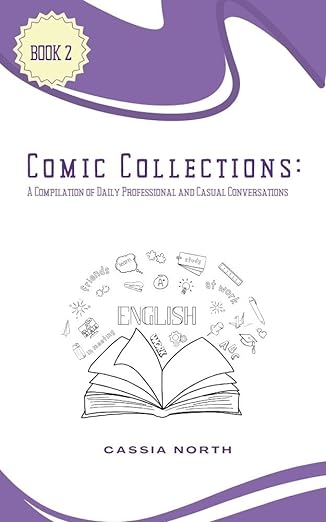
Conquer the Apostrophe Catastrophe: Mastering “Its” vs. “It’s” in Your Writing
Common English Errors Blogs “Let’s Learn, Explore, and Connect to the World” Conquer the Apostrophe Catastrophe: Mastering “Its” vs. “It’s” in Your Writing Introduction In



 Moreover, the role of effective communication extends beyond the individual, influencing the broader professional setting. It is the foundation upon which relationships are built and maintained. In business environments, where time is a valuable commodity, the ability to communicate efficiently and clearly directly impacts productivity and operational success. Emails that are concise, well-structured, and free from errors are more likely to be read and responded to promptly, facilitating smoother workflows and quicker decision-making processes.
Moreover, the role of effective communication extends beyond the individual, influencing the broader professional setting. It is the foundation upon which relationships are built and maintained. In business environments, where time is a valuable commodity, the ability to communicate efficiently and clearly directly impacts productivity and operational success. Emails that are concise, well-structured, and free from errors are more likely to be read and responded to promptly, facilitating smoother workflows and quicker decision-making processes. In the realm of business communication, emails are a primary tool for exchanging information, proposals, updates, and even casual professional greetings. To harness the full potential of this tool, it is imperative to grasp and apply three fundamental principles: clarity and conciseness, tone and formality, and audience awareness. These principles are not just guidelines but the backbone of effective email writing, ensuring that the message not only reaches the recipient but also achieves its intended effect.
In the realm of business communication, emails are a primary tool for exchanging information, proposals, updates, and even casual professional greetings. To harness the full potential of this tool, it is imperative to grasp and apply three fundamental principles: clarity and conciseness, tone and formality, and audience awareness. These principles are not just guidelines but the backbone of effective email writing, ensuring that the message not only reaches the recipient but also achieves its intended effect. The cornerstone of any effective business email is its ability to convey a message clearly and concisely. In a business setting, time is of the essence. Recipients often skim through emails, looking for pertinent information. Therefore, getting to the point quickly without sacrificing clarity is crucial. This requires a disciplined approach to writing, focusing on straightforward language and avoiding unnecessary jargon or verbosity. Clarity is further enhanced by structuring the email logically, with a clear introduction, body, and conclusion, ensuring the recipient can easily follow the message’s progression and grasp its essence promptly.
The cornerstone of any effective business email is its ability to convey a message clearly and concisely. In a business setting, time is of the essence. Recipients often skim through emails, looking for pertinent information. Therefore, getting to the point quickly without sacrificing clarity is crucial. This requires a disciplined approach to writing, focusing on straightforward language and avoiding unnecessary jargon or verbosity. Clarity is further enhanced by structuring the email logically, with a clear introduction, body, and conclusion, ensuring the recipient can easily follow the message’s progression and grasp its essence promptly. The tone of a business email should strike a balance between professionalism and approachability. It’s a reflection of your company’s culture and your professional demeanor. While the default tone for most business emails is formal and polite, there is room for slight adjustments based on the relationship with the recipient and the email’s context. For instance, an email to a long-standing client with whom you have a friendly relationship may be less formal than one to a new prospect. However, maintaining a level of formality is crucial to ensure the message is taken seriously. This is where punctuation and mechanics play a pivotal role; they help convey the intended tone, whether assertive, inquisitive, or something else entirely.
The tone of a business email should strike a balance between professionalism and approachability. It’s a reflection of your company’s culture and your professional demeanor. While the default tone for most business emails is formal and polite, there is room for slight adjustments based on the relationship with the recipient and the email’s context. For instance, an email to a long-standing client with whom you have a friendly relationship may be less formal than one to a new prospect. However, maintaining a level of formality is crucial to ensure the message is taken seriously. This is where punctuation and mechanics play a pivotal role; they help convey the intended tone, whether assertive, inquisitive, or something else entirely. To understand your audience is crucial in tailoring your message to their expectations and needs. Audience awareness encompasses several dimensions, including the recipient’s position within their organization, their familiarity with the subject matter, and their cultural background. These factors influence not only the content of your message but also your language choice and level of detail. For instance, technical jargon may be appropriate when writing to a specialist in your field but could confuse someone from a non-technical background. Similarly, cultural sensitivity is vital, especially in global business environments, where what’s considered polite or informal can vary widely. Being aware of these nuances and adjusting your email accordingly can significantly enhance communication efficacy and foster positive professional relationships.
To understand your audience is crucial in tailoring your message to their expectations and needs. Audience awareness encompasses several dimensions, including the recipient’s position within their organization, their familiarity with the subject matter, and their cultural background. These factors influence not only the content of your message but also your language choice and level of detail. For instance, technical jargon may be appropriate when writing to a specialist in your field but could confuse someone from a non-technical background. Similarly, cultural sensitivity is vital, especially in global business environments, where what’s considered polite or informal can vary widely. Being aware of these nuances and adjusting your email accordingly can significantly enhance communication efficacy and foster positive professional relationships. The mechanics of writing—encompassing sentence structure, word choice, and verb tense consistency—are essential components of effective business emails. These elements work in harmony to ensure that emails are not only readable and coherent but also convey professionalism and precision. In the context of business communications, where the aim is to share information efficiently and foster positive professional relationships, the significance of these mechanics cannot be understated.
The mechanics of writing—encompassing sentence structure, word choice, and verb tense consistency—are essential components of effective business emails. These elements work in harmony to ensure that emails are not only readable and coherent but also convey professionalism and precision. In the context of business communications, where the aim is to share information efficiently and foster positive professional relationships, the significance of these mechanics cannot be understated. A well-structured sentence is the bedrock of clear communication. In business emails, the goal is to convey complex ideas in a way that is easy for the reader to digest. This involves crafting sentences that are neither too long nor too short but are just right to maintain the reader’s attention and ensure comprehension. Long, run-on sentences can be confusing and may obscure the main point, while overly short sentences can make an email feel choppy and disjointed. Balancing sentence length and structure enhances readability and helps maintain a flow that guides the reader through the message seamlessly.
A well-structured sentence is the bedrock of clear communication. In business emails, the goal is to convey complex ideas in a way that is easy for the reader to digest. This involves crafting sentences that are neither too long nor too short but are just right to maintain the reader’s attention and ensure comprehension. Long, run-on sentences can be confusing and may obscure the main point, while overly short sentences can make an email feel choppy and disjointed. Balancing sentence length and structure enhances readability and helps maintain a flow that guides the reader through the message seamlessly. The words we choose in our emails can significantly impact how our message is received. In a business context, selecting precise vocabulary is crucial for clear communication. The right word can convey a message succinctly and effectively, while the wrong word can lead to confusion or misinterpretation. Moreover, the use of specific, industry-relevant terminology can establish credibility and demonstrate expertise, provided it is used appropriately and the audience is familiar with the terms.
The words we choose in our emails can significantly impact how our message is received. In a business context, selecting precise vocabulary is crucial for clear communication. The right word can convey a message succinctly and effectively, while the wrong word can lead to confusion or misinterpretation. Moreover, the use of specific, industry-relevant terminology can establish credibility and demonstrate expertise, provided it is used appropriately and the audience is familiar with the terms.
 Punctuation serves as the silent guide in written communication, subtly influencing the flow, clarity, and tone of the text. In business emails, where the goal is to communicate effectively and professionally, the correct use of punctuation marks becomes a critical tool. It can transform a jumbled mess of words into a coherent message, emphasize key points, and convey the intended emotion or level of formality. Let’s delve into the specifics of how certain punctuation marks—commas, periods, semicolons, question marks, exclamation points, apostrophes, and quotation marks—play pivotal roles in the crafting of business emails.
Punctuation serves as the silent guide in written communication, subtly influencing the flow, clarity, and tone of the text. In business emails, where the goal is to communicate effectively and professionally, the correct use of punctuation marks becomes a critical tool. It can transform a jumbled mess of words into a coherent message, emphasize key points, and convey the intended emotion or level of formality. Let’s delve into the specifics of how certain punctuation marks—commas, periods, semicolons, question marks, exclamation points, apostrophes, and quotation marks—play pivotal roles in the crafting of business emails. In the pursuit of professional excellence, paying attention to the common mistakes in business emails is as crucial as understanding the best practices. Certain errors are frequently encountered in the digital workplace, and avoiding these can significantly enhance the effectiveness and professionalism of your communication. Here are three common pitfalls to be wary of: the overuse of jargon and complex vocabulary, neglecting proofreading, and the misuse of punctuation marks.
In the pursuit of professional excellence, paying attention to the common mistakes in business emails is as crucial as understanding the best practices. Certain errors are frequently encountered in the digital workplace, and avoiding these can significantly enhance the effectiveness and professionalism of your communication. Here are three common pitfalls to be wary of: the overuse of jargon and complex vocabulary, neglecting proofreading, and the misuse of punctuation marks. The fast-paced nature of the business world often leads to hurriedly composed emails sent without a thorough review. However, emails riddled with punctuation and grammar errors not only undermine the message’s clarity but also reflect poorly on the sender’s professionalism. Taking the time to proofread your emails before sending them is a simple yet effective practice that can prevent misunderstandings and convey a positive, professional image. Tools such as spell checkers and grammar-checking software can assist in this process, but a final, careful read-through is irreplaceable for catching overlooked errors or awkward phrasings.
The fast-paced nature of the business world often leads to hurriedly composed emails sent without a thorough review. However, emails riddled with punctuation and grammar errors not only undermine the message’s clarity but also reflect poorly on the sender’s professionalism. Taking the time to proofread your emails before sending them is a simple yet effective practice that can prevent misunderstandings and convey a positive, professional image. Tools such as spell checkers and grammar-checking software can assist in this process, but a final, careful read-through is irreplaceable for catching overlooked errors or awkward phrasings.


 Throughout this guide, we’ve delved into the intricate world of mechanics and punctuation, highlighting their pivotal role in crafting clear, concise, and professional business emails. From the foundational principles of writing—emphasizing clarity, tone, and audience awareness—to the detailed exploration of sentence structure, word choice, and verb tense consistency, we’ve seen how each element contributes to effective communication. The correct usage of punctuation marks which include commas, periods, semicolons, and more, further refines our messages, ensuring they convey the intended tone and detail.
Throughout this guide, we’ve delved into the intricate world of mechanics and punctuation, highlighting their pivotal role in crafting clear, concise, and professional business emails. From the foundational principles of writing—emphasizing clarity, tone, and audience awareness—to the detailed exploration of sentence structure, word choice, and verb tense consistency, we’ve seen how each element contributes to effective communication. The correct usage of punctuation marks which include commas, periods, semicolons, and more, further refines our messages, ensuring they convey the intended tone and detail. As we conclude, remember that prioritizing the mechanics and punctuation in your business communications is not merely about following rules—it’s about making a lasting impression, fostering clear understanding, and achieving professional success. Let these principles guide your writing, and watch as your professional communications transform, leading to stronger relationships, clearer exchanges, and a heightened sense of credibility in your professional endeavors.
As we conclude, remember that prioritizing the mechanics and punctuation in your business communications is not merely about following rules—it’s about making a lasting impression, fostering clear understanding, and achieving professional success. Let these principles guide your writing, and watch as your professional communications transform, leading to stronger relationships, clearer exchanges, and a heightened sense of credibility in your professional endeavors.




